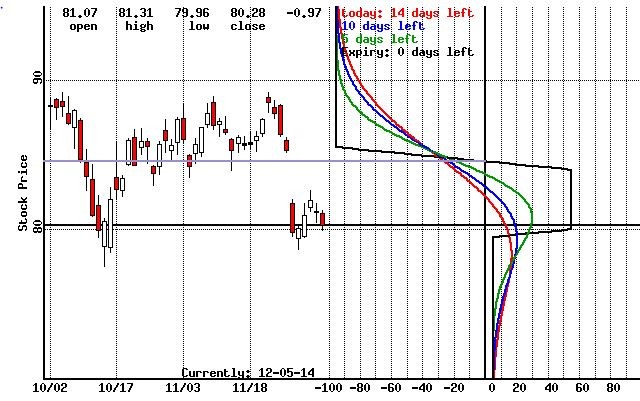Market Volatility Strategy Collars_1
Post on: 16 Март, 2015 No Comment

Outlook: Long-term bullish, short-term cautious
The collar is a two-pronged strategy intended to lock in profits and/or limit risk on a stock investment, similar to the protective put. In fact, the collar is nothing more than the combination of a protective put with a covered call, as youll see in the example below.
So, why implement a collar instead of a simple protective put? The addition of the covered call essentially results in a credit being applied toward the cost of your protective put, which can partially or totally offset the cost of your hedge. The trade-off, of course, is that your shares could be called away if they breach the sold call strike prior to expiration.
Entering the Trade
XYZ has been a solid performer in your portfolio, but the stock is now approaching the round $60 level. This area has historically served as resistance, and youre wary of a near-term pullback. You originally bought 100 shares of XYZ at $53 each, and youd like to preserve at least a portion of your paper profits.
To implement a collar with the stock at $58, you could buy to open a 55-strike put, and simultaneously sell to open a 60-strike call. The put is asked at 0.51, while the call is bid at 0.44. All in all, your net debit on the collar is 0.07 or $7, after multiplying by 100 shares per contract.
Potential Gains
There are no real profits associated with a collar, since its ultimately a hedging strategy. Your primary gain is an intangible namely, peace of mind that your investment is protected from a sharp, sudden downturn in the stock.
However, if you luck into a scenario where the premium received from the covered call is greater than the premium paid for the protective put, you could potentially keep that net credit as an added bonus, should both legs of the collar expire worthless.
Potential Losses
On the collar itself, the most you can lose is the initial net debit of 0.07, or $7. This loss will be realized if XYZ closes anywhere between the call and put strikes prior to expiration.
Should XYZ take a dive, though, youll be able to sell your shares at no less than the strike price of the purchased put. Depending upon your entry price for XYZ and the strike price of your option, this could either limit your losses on the stock trade or ensure youll get to keep some previously unrealized profits.
On the other hand, if XYZ should rally through the strike price of the sold call, your shares could be called away. While you might still collect a profit on the stock investment, youll forfeit any additional upside you could have enjoyed as a continued shareholder.
Volatility Impact
The effect of implied volatility fluctuations on a collar spread is virtually nil, since youre combining a long put, short call, and long stock position on the same underlying asset.
Other Considerations
As alluded to above, you can adjust your strike selection in a collar to suit your particular investing goals. You can align your protective put to protect paper profits and guarantee youll exit the trade at a gain, or you can simply choose to cap your downside risk at a predetermined level for example, 5% or 10% below your original entry price.
If XYZ is a stock you feel very strongly about keeping in your portfolio in other words, youre not comfortable with the idea of your shares being called away you may want to consider a straightforward protective put instead of a collar.














